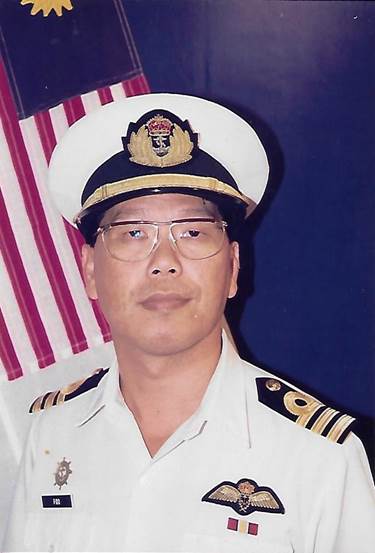 |
||
THE RMN PIONEERING THE SKIES – THE WILLIAM FOO EXPERIENCE
William Foo Yap Seng was born on 13 September 1957 in Malacca. He joined the Royal Malaysian Navy (RMN) on 8 June 1976 immediately after completing his secondary education. He was selected into the General Service (Executive) Branch of the RMN. William Foo was promoted to a full Lieutenant (Lt) in the RMN on 1 November 1978 and eventually rose in rank to Commander (Cdr) RMN 29 July 1998. He retired from the Navy on 3 April 2002, after having completed over 26 years of service to the RMN.
Throughout his 26 over years of service, he had held responsible positions in Communication, Navigation, Gunnery and Training Officer (Cadets) in sea and shore establishments. He had also served in the leadership roles ranging from Senior Staff Officer, Executive Officer to Commanding Officer (CO). Indeed, he was a very proud officer to have been appointed and assumed command of two CO posts in his naval career, namely KD RAJAWALI (RMN AIR STATION) and KD MUSYTARI. His last appointment before retirement from the RMN was Chief Of Staff Operations in the Naval Headquarters.
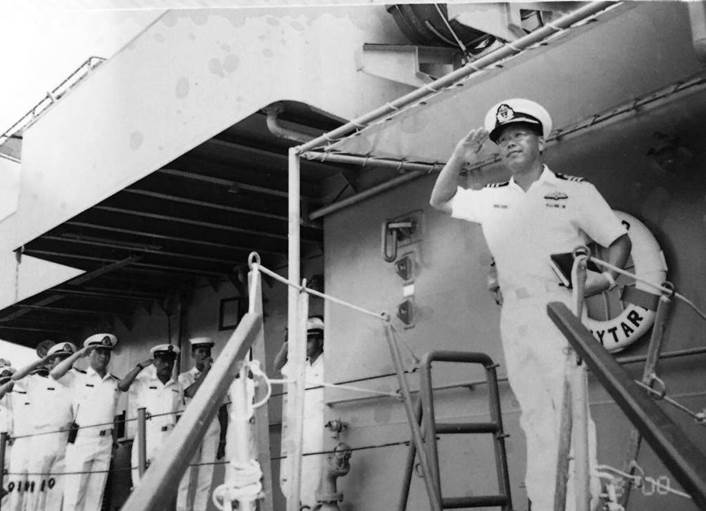 |
The RMN AIR STATION or KD RAJAWALI was officially commissioned on 11 May 1990. Prior to the set-up of this new AIR WING for the Navy, Lt William Foo RMN was overjoyed when he was named on 15 Jan 1985 as one of those 13 candidates shortlisted to become the first ever intended pilots in the RMN.
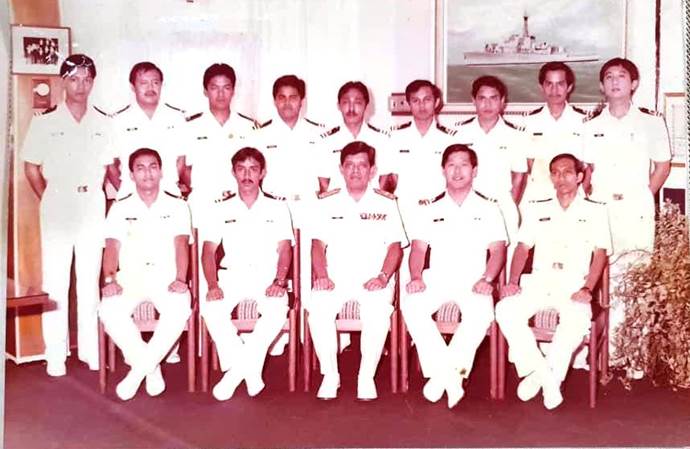 |
To set up an AIR WING, apart from training pilots, the RMN had purchased six ex-Royal Navy (RN) WASP HAS MKI helicopters from the United Kingdom on 27 Apr 1988. The formation of the WASP Squadron commenced with the delivery of these six WASP helicopters to the RMN.
Weighing approximately 5500lbs, the WASP helicopters were powered by a Rolls Royce NIMBUS engine giving it a maximum speed of 90 knots. It can be equipped, depending on the mission, with a variety of weapons including torpedoes and anti-ship missiles. The WASP helicopter was a specialized naval helicopter which can operate at night and was designed to land on a small area, which was suitable for operating on warships.
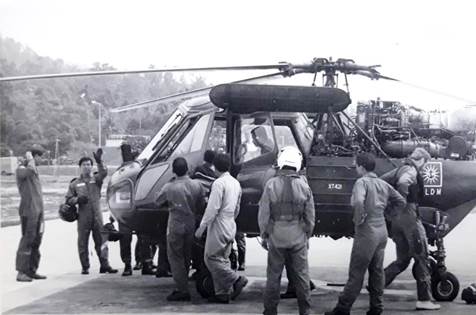 |
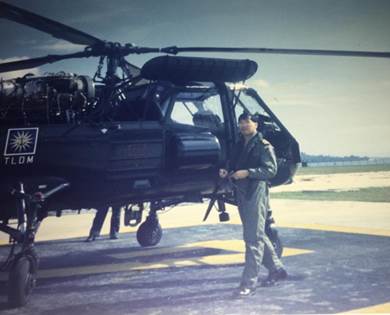 |
In the early days, the RMN AIR STATION was assisted and supervised by Royal Navy loan service personnel and also the Royal Malaysian Air Force (RMAF). KD RAJAWALI became independent and fully managed by all RMN personnel in 1994.
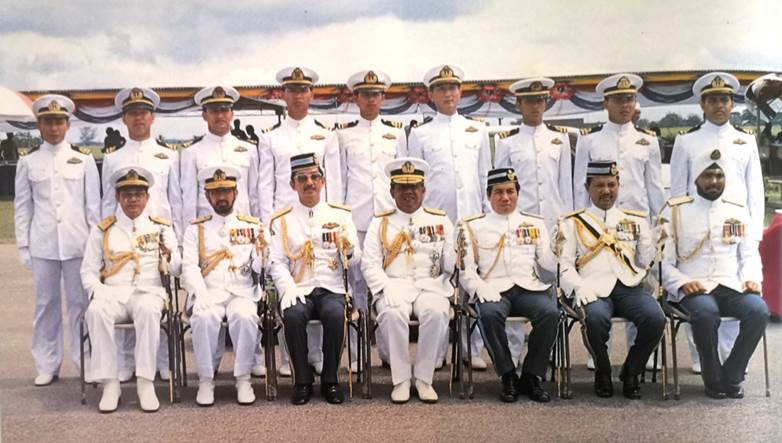 |
Naval Pilot Lt Cdr William Foo RMN went through an harrowing incident in the line of duty while serving the RMN as a Naval Pilot. The narrative of the events is as follows.
THE NARRATIVE OF THE CASEVAC OF 17 MAR 1992
AIRCRAFT: WASP 06
COMMANDER: LT CDR WILLIAM FOO RMN
DOCTOR IN FLIGHT: DR CAPT HANIFFULLAH KHAN
UNIT: KD RAJAWALI (RMN AIR STATION)
REQUESTING SHIP FOR CASEVAC: KD LEKIR
POSITION: APPROX 10 MILES OFF PANGKOR ISLAND
SEA STATE: 1 (Calm)
On 17 Mar 1992, KD LEKIR had requested for a CASEVAC for a sailor who was badly injured by a rope incident during a sea exercise just 10 nautical miles off Pangkor Island. WASP 06 was immediately tasked for the evacuation mission. WASP 06 helicopter was commanded and flown by Lt Cdr William Foo RMN accompanied by Dr Captain Haniffulah Khan. They were both airborne shortly from KD RAJAWALI headed for KD LEKIR.
As soon as the helicopter had landed on the flight deck of KD LEKIR, Dr Hanif disembarked to immediately attend to the injured sailor; the rescue chopper remained on deck with rotors still whirling. After the injured sailor’s condition was confirmed stable for evacuation by the doctor, the ship’s deck crew assisted Dr Hanif to secure the still unconscious patient strapped onto a stretcher to the rear interior of the helicopter’s cabin.
All safely secured and without any further delays, William commenced his takeoff from the ship’s helicopter deck as the chopper steeply climbed vertically and then whirled forward towards the LUMUT NAVAL BASE.
Just as the chopper was leveling at a 1000 feet above sea level, the aircraft suddenly and very unexpectedly fell into a rapid descending mode falling at 2200 feet per minute. William, his adrenalin level already raised had quickly analysed and assessed that the chopper’s collective lever was jammed at the cockpit floorboard. He was unable to budge, motivate or manoeuvre the collective lever at all, even with the force of both hands. To compound the already complicated situation there were neither warning lights nor bleeping sounds displayed at the consul in the cockpit to warn of the impending dangers ahead.
With his nerves still intact, William hurriedly queried aloud to Dr Hanif, who was seated beside him to the left, if he had at any time accidently touched or pushed the flying controls. His quick answer was a “No”, in fact he was still holding onto the intravenous drip bottle for the CASEVAC patient since takeoff..
In a quick reaction, William quickly reduced the aircraft’s air speed to around 60 knots; as the chopper had already descended by 800 feet uncontrolled. It was realization time at around 200 feet above the sea level, the aircraft was continuing on its high rate of descent; they (pilot, the doctor and patient) will surely have no other choice but to ditch the chopper into the waters soon. Dr Hanif was instructed to let go of the intravenous drip bottle, brace and standby for an impending crash impact. Also, flashing across his mind, William saw images of his family passing by on the windscreen and then he prayed out loud “God, please help me!” before that uncertain future ahead..
At that exact moment, William had used his thumb to engage the toggle switch, located on the collective lever, with the intentions to cut off the hydraulic system of the chopper as his last act of adhering to procedures. Confoundedly, in doing so (he flicking the toggle switch), the collective lever was suddenly and unexpectedly released from its jammed position on its own. The collective lever released, William immediately manoeuvred to raise it to climb away to 1000 feet again. The almost disastrous situation was miraculously recovered from less than 50 feet above the sea. It was a harrowing experience; William is indeed very grateful towards God for answering his payers.
WASP 06 arrived safely back at the RMN AIR STATION, the hydraulics switch had remained in the “OFF” mode and the chopper landed safely without any further incident. Dr Hanif and the patient were hurriedly moved to the navy hospital. Lt Cdr Peter McMannus RN and his team of technical supervisors immediately undertook inspections as to the cause of the uncontrolled steep decent issue. They later confirmed that the split pin from the servo jack had dislodged, thereby causing the collective lever to remain jammed at the cockpit floorboard temporarily.
Dr Hanif and William are indeed very grateful for being miraculously saved while carrying out that successful CASEVAC in the end, it just seemed like it’s all in a day’s work.
PRESENT DAY
After retirement from the RMN, Cdr William Foo took up a career in commercial aviation from 2002 to 2016. He is currently employed as a Theoretical Knowledge Instructor at Helang Flying Academy Sdn Bhd.
Written by Cdr William Foo RMN (Rtd) in collaboration with
Lt Soon Tet Leong RMN (Rtd)
4 Dec 2019